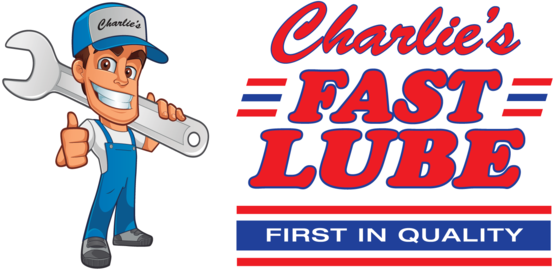The Charlie's Fast Lube Jackson Guide to Tire Specs
July 24, 2022
You know you need new tires, but you're not sure what type. You look at a tire to get the size: 225, 50, R, 16, 92, H. All the way to the Jackson service center you keep repeating it over and over. You even say it over in your mind while waiting in line. Then you get to the counter and the manager asks what size you need. Then your mind goes blank.
Tire size can be confusing for many Jackson drivers. There's so much on the side of the tire, and it's hard to keep straight.
Even though there's a lot on a tire - if you know what it all means, it's actually more helpful than confusing for Jackson tire shoppers. Let's start with the size number.
For example, let's say a tire reads: 225 50 R 16 92 H. The 225 part is the width of the tire in millimeters - the width between the sidewalls of an inflated tire with no load. The 50 is the aspect ratio - the ratio of the sidewall height to the tread width. Off-road tires will have a higher number and high performance tires will have a lower number.
The R signifies it's a radial tire. And 16 is the rim or wheel size in inches.
The 92 is the load rating index - it's the load carrying capacity of a tire. The higher the number, the more it can safely carry. Your empty vehicle can be safe with a lower number, but you'll need a higher rating if you routinely haul heavy loads around Jackson. The next letter is the speed rating. Not all tires sold in Jackson are speed rated. The ratings generally follow the alphabet: the further up the alphabet, the higher the speed rating - with the exception of H - it comes between U and V (don't ask why).
There's a lot of fine print that most Jackson area drivers probably need a magnifying glass to read. But there are a couple of other large print items of interest. One is the tread type: highway, mud and snow, all season, severe snow, etc.
And then there are the Uniform Tire Quality Grading System markings. The first is a tread wear index. 100 is the base line - a lower number is poorer and a higher number is better. All things being equal, a tire rated 200 would wear twice as long, on a government test track, than one rated at 100. These wear grades are only valid within the manufacturers product line - you can't compare with others. And it's important to note that a lower rating might be just what you want - a high performance, sticky tire has a softer rubber compound and won't wear as long, but boy, will it take those corners on twisting Missouri roads.
The next is a traction grade. This measures the tire's ability to stop on wet pavement in government tests. A - the best, B - intermediate, C - acceptable.
Temperature grade measures a tire's resistance to heat buildup in government tests. A, B and C - from best to acceptable.
It's safe for Jackson drivers to go with the vehicle manufacturers original equipment recommendations that came on your car. But if you want to make adjustments, you'll now be better equipped to communicate with your friendly and knowledgeable Charlie's Fast Lube Jackson tire professional.
Charlie's Fast Lube Jackson
1901 E. Jackson Blvd.
Jackson, Missouri 63755
575-243-2226
http://www.charliesfastlubejackson.com
Need Service?
More articles from Charlie's Fast Lube Jackson

Charlie's Fast Lube Jackson Advice on What to Pour into Your Vehicle
April 13, 2025
Changes in vehicle design and manufacture have resulted in changed fluid requirements for our vehicles. With the sophistication of engines, transmissions, differentials, etc., it's best for Jackson residents to always use the proper type of fluid for their vehicle. Using incorrect fluids can act... More

Low Power Mystery (Ignition Coil Service)
April 6, 2025
It's no fun when your vehicle just doesn't run the way it used to. You may notice (especially in cold weather) the engine won't start easily or when it does start, it doesn't run smoothly. It may not have much power at all. You also may have had to stop at the gas station more often, a sign you... More

Feeling Powerless (Why Is My Battery Light On?)
March 30, 2025
When one of your vehicles warning lights comes on, the first thing that comes to mind is, Oh, no, whats wrong now? When its the battery light, it means theres something wrong with your vehicles battery or charging system. And because both are important for your vehicle to work properly, its a go... More










